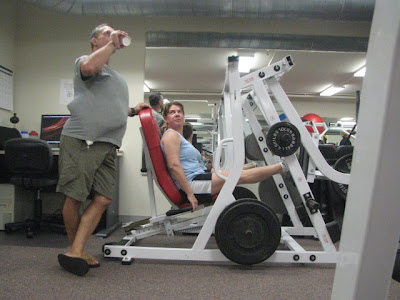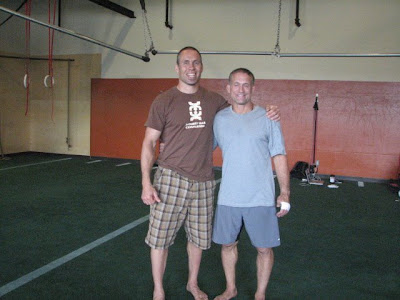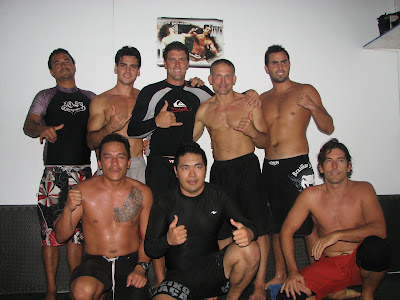



Greetings from the City of Brotherly Love!
I've been enjoying visiting my old hang outs. It's fun catching up with friends, family and clients and opportunities for great training abound as always. As anyone who's been reading along knows, I've a real penchant for outdoor workouts. I love having the whole world as my gym.
Even when I lived in Philly and owned Maxercise, I spent a lot of time in my own backyard gym. I love the fresh air and sunshine. When it comes to training, I don't really mind even the heat and humidity...much. I love to work myself up into a lather, they say, and I've had plenty of opportunity to do just that with this east coast summer ambiance.
I decided upon an impromptu workout on the steps of the Philadelphia Art Museum. One of the most famous workout scenes of all time is the scene from Rocky where Sylvester Stallone sprints up the stairs and does his jubilant dance while looking over the city. Bus load after bus load of tourists stopped at the base of the stairs as I watched the people unload and chase each other up the steps, each individually re-enacting the famous Hollywood scene. I decided to join them with my own version, doing as many stair sprints as possible in 15 minutes.
These stairs are tricky because they are neither even nor linear, they are broken up into several different lengths. Sprinting in general is fantastic for anaerobic conditioning, power, speed-endurance and HGH production. Because of the selective use of fast-twitch muscle fiber and the post-workout Human Growth Hormone surge (with its accompanying fat-burning and metabolic boost) stair sprints are an excellent anti-aging workout protocol. I regularly include sprint protocols in my own routines.
One of the downsides to stair sprinting is the knee stress on the descent. Running UP stairs is actually easier on your body than running down! For this reason, I take my time and walk back down instead of running.
I don't do stairs without thoroughly warming up. I chose another fantastic form of interval training for this: my trusty Lifeline Weighted Speed Rope. The weighted speed rope is a very deceitful training tool. It's about 1 kg, which is light enough to spin at a fairly fast pace, but the weight is heavy enough to thoroughly engage the upper body musculature so you'll feel the cardio effects throughout the entire body, instead of just the lower body. The hands, wrists, forearms, elbows and shoulders get a heavy, strength-endurance workout along with the feet, ankles, calves and thighs. The cool thing about the heavy speed rope is that it's actually easier for beginners to use than a regular jump rope because of its slower turning speed...but, just because you're going slower than you would on a regular jump rope doesn't mean you're getting any less of a workout. This rope is a total butt-kicker.
People who are used to jumping rope on a regular rope have expressed dismay when I put them on the weighted speed rope. They're shocked at how quickly their heart rate is driven and the level of fatigue they're experiencing. It's kind of like doing a whole-body sprint. Another cool thing about the heavy speed rope? It can be used in a confined space, e.g. indoors, so there's never any excuse not to get your sprint on, even in the inclement weather! With this baby, you can always get an amazing cardio workout--even in your jail cell!
For my Art Museum Workout, I started with:
15 rounds of 30-sec heavy speed rope sprints, with 30-sec recovery
After a 5-min rest I was ready to ascend the stairs, the stairs to heaven, if you will, since sprints produce a certain euphoria by stimulating the release of feel-good neurotransmitters.
Starting from the bottom, I sprinted to the top and then quickly walked back down.
I repeated as many rounds as I could get in 15 minutes. I got about 12 rounds. I lost count somewhere in the middle but who cares? I was...flying high, now!
I imagined the gray-sweat-suit-clad Rocky flying up those stairs.
At the end of the workout, I had that oh-so-pukey-good feeling and chugged my post-workout recovery treat drink.
I then availed myself to the municipal fountain for a post-workout dip--it's the ultimate recovery drink! When you live in a van, you can't be too choosy, though I read in the paper the Philly police will soon be cracking down on this sort of thing...
For you aging boomers out there, work in a set of sprints at least once a week. If you're low-carbing, be sure to replenish glycogen with a post-workout carbohydrate/whey solution.

























